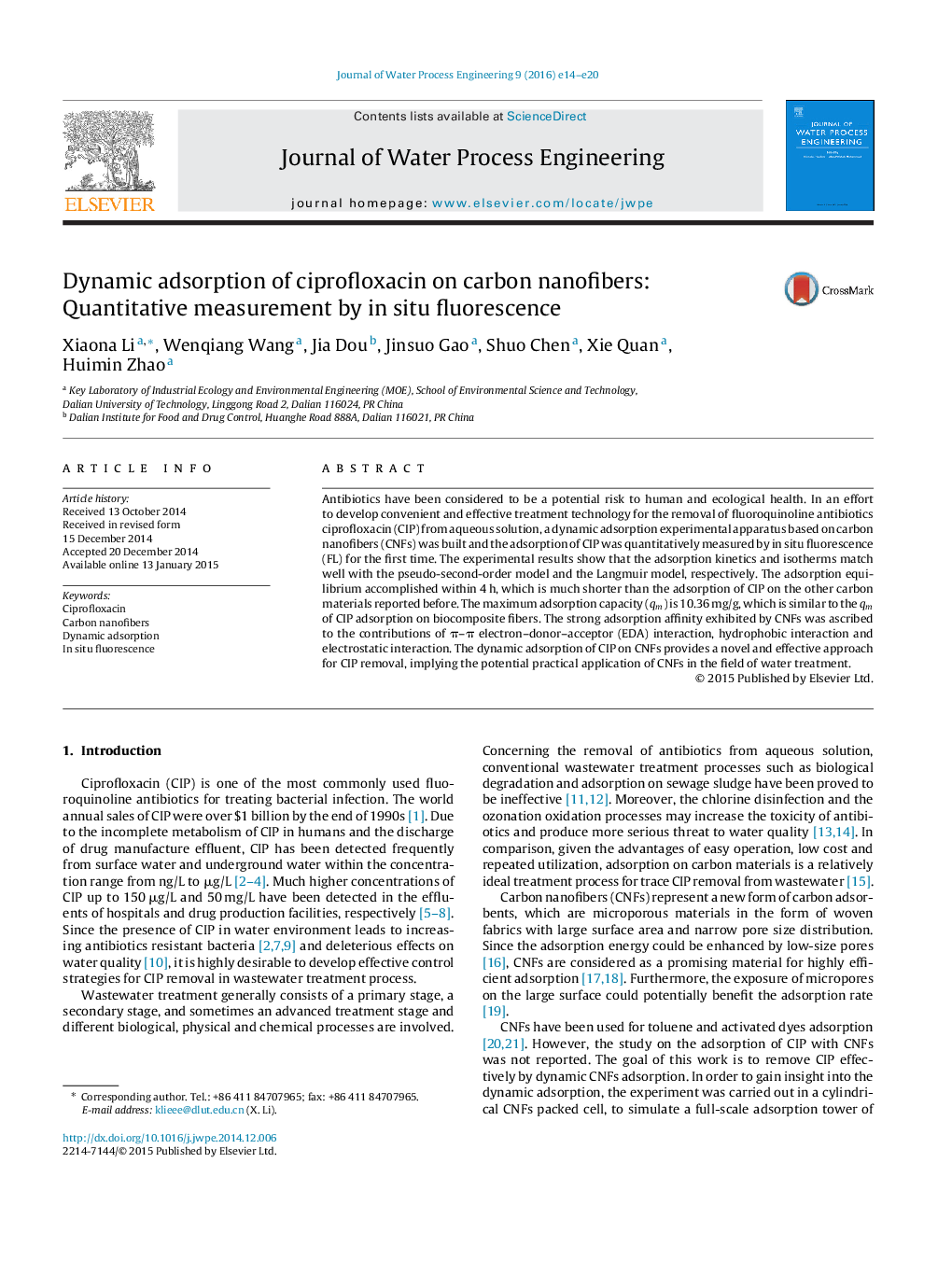| Article ID | Journal | Published Year | Pages | File Type |
|---|---|---|---|---|
| 232491 | Journal of Water Process Engineering | 2016 | 7 Pages |
•Dynamic adsorption of CIP on CNFs removed CIP efficiently.•Concentration of CIP was determined by in situ fluorescence measurements.•Adsorption equilibrium was reached before 4 h and the qm was 10.36 mg/g.•pH effect was investigated and the adsorption mechanism was revealed.
Antibiotics have been considered to be a potential risk to human and ecological health. In an effort to develop convenient and effective treatment technology for the removal of fluoroquinoline antibiotics ciprofloxacin (CIP) from aqueous solution, a dynamic adsorption experimental apparatus based on carbon nanofibers (CNFs) was built and the adsorption of CIP was quantitatively measured by in situ fluorescence (FL) for the first time. The experimental results show that the adsorption kinetics and isotherms match well with the pseudo-second-order model and the Langmuir model, respectively. The adsorption equilibrium accomplished within 4 h, which is much shorter than the adsorption of CIP on the other carbon materials reported before. The maximum adsorption capacity (qm) is 10.36 mg/g, which is similar to the qm of CIP adsorption on biocomposite fibers. The strong adsorption affinity exhibited by CNFs was ascribed to the contributions of π–π electron–donor–acceptor (EDA) interaction, hydrophobic interaction and electrostatic interaction. The dynamic adsorption of CIP on CNFs provides a novel and effective approach for CIP removal, implying the potential practical application of CNFs in the field of water treatment.
Graphical abstractFigure optionsDownload full-size imageDownload as PowerPoint slide
